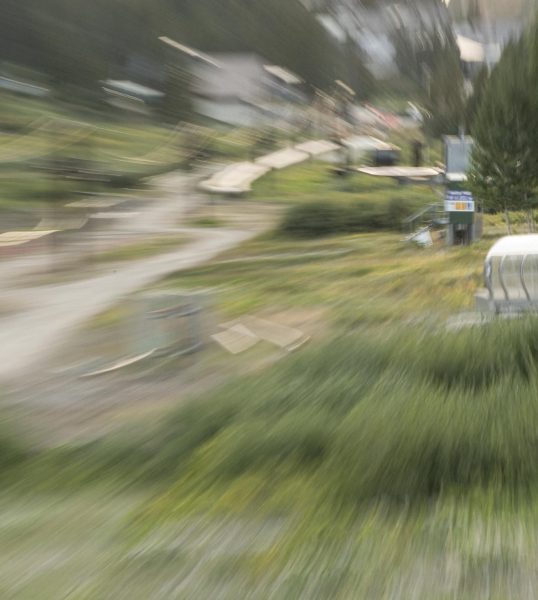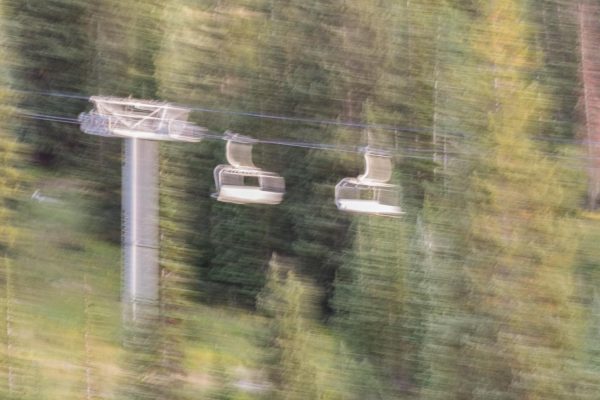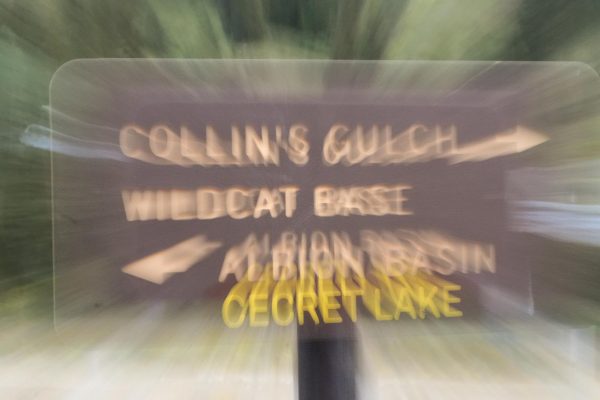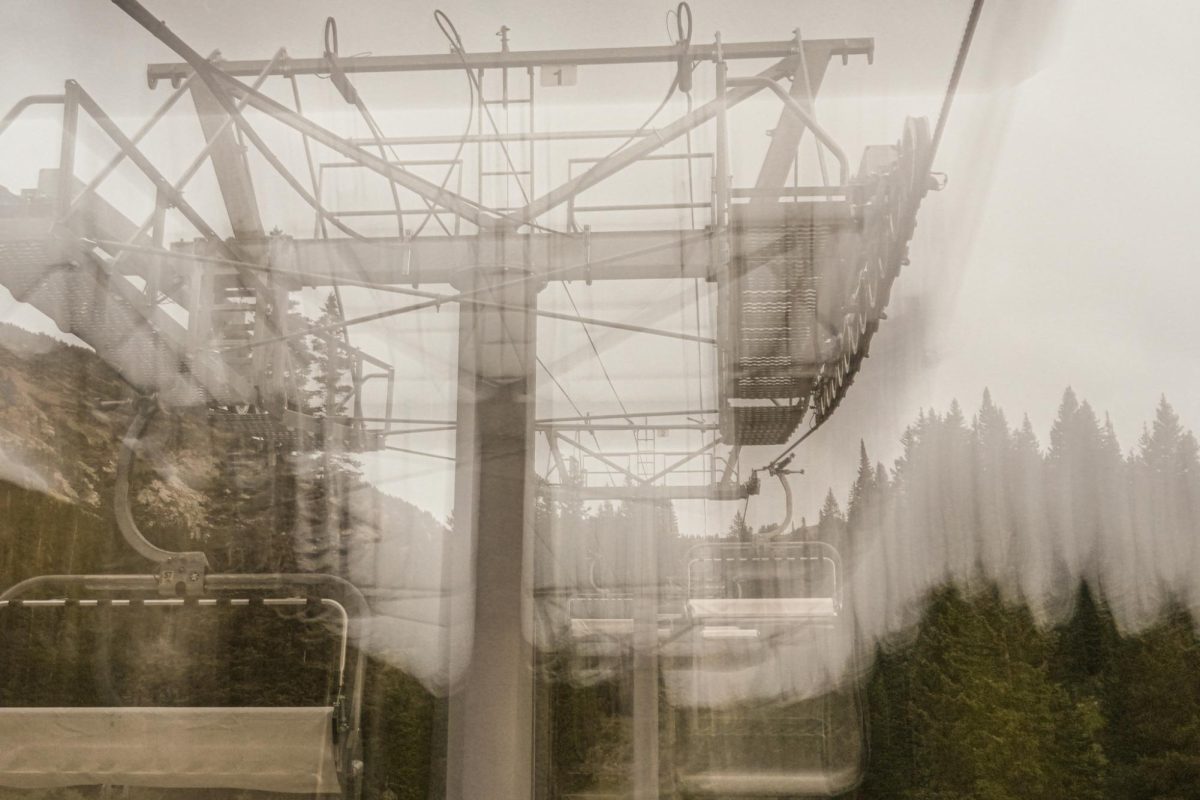I savor the summer months each time they come around. Though the impossibly dry heat can test my commitment, I always find a way to miss this time come autumn. For memories are born in the soft fabric of summer, everyone knows that. It is the time of molasses, where everything seeps slowly and seconds melt into a steady lull. Despite this, I often feel like summers slip away too quickly. In an effort to appreciate this season one last time, I made my way up to an unlikely place for such a thing: the ski town of Alta.
 Alta, perched at the top of Little Cottonwood Canyon, is famed for its winter atmosphere. Snowfall is generous here, and reached its record high of 903 inches just in the 2022-23 ski season. Soon, thousands of skiers will be filtering in and out of this resort every day. For now, though, this place lies in a lively coma, where streams rush and moose wander below stagnant empty chairlifts. It’s odd, this dichotomy of stillness and life–– human-made and natural. Yet, at the same time, it seems these two things belong together. Upon first glance, one might see ski infrastructure as an eyesore: clunky machinery littered across the mountains providing nothing but a harsh announcement that humans have made their presence known in this place too. Each time that I have come up here, though, I’ve never felt disrupted by the long line of suspended chairs or the massive steel towers jutting out of the landscape. I couldn’t help but wonder why.
Alta, perched at the top of Little Cottonwood Canyon, is famed for its winter atmosphere. Snowfall is generous here, and reached its record high of 903 inches just in the 2022-23 ski season. Soon, thousands of skiers will be filtering in and out of this resort every day. For now, though, this place lies in a lively coma, where streams rush and moose wander below stagnant empty chairlifts. It’s odd, this dichotomy of stillness and life–– human-made and natural. Yet, at the same time, it seems these two things belong together. Upon first glance, one might see ski infrastructure as an eyesore: clunky machinery littered across the mountains providing nothing but a harsh announcement that humans have made their presence known in this place too. Each time that I have come up here, though, I’ve never felt disrupted by the long line of suspended chairs or the massive steel towers jutting out of the landscape. I couldn’t help but wonder why.
I believe it’s because this type of infrastructure is resemblant of a desire to be closer to and with the environment; an ardent gesture to interact and connect. Though many may argue it doesn’t look that way, it enables a sort of intimacy with the landscape, literally pulling people to snow-covered slopes and breathtaking peaks. This dynamic is not confined to the winter months, either. Whether hiking, mountain biking, or simply exploring the trails, people can enjoy Alta’s summer landscapes whatever the activity.
This does not go without saying that any type of recreationally related development is good for the environment. In fact, a study found that the modification necessary to establish ski resorts can cause destruction of natural hill slopes and lead to lasting soil erosion. Knowledge of such interactions can better inform resorts on the implications of establishing and expanding ski areas in sustainable ways. Alta offers stewardship events that help care for these cherished areas during the summer and into the fall. Alta Tree Planting Day, for example, is Alta’s biggest volunteer day of the year when people come together to plant over 1,000 Engelmann Spruce saplings across the slopes. Cultivating community through sustainable actions is a promising effort to keep our recreational spaces happy and healthy. 
Perhaps I retreated up here to get away from the hastiness of September, and to possibly relish in a few more moments of the summer. Regardless, I found myself drawn not so much to the sunset, but the tranquility of the atmosphere itself. As I studied the hillsides strewn with cables and chairs, it prodded me to question such a juxtaposing display, and to reflect upon the complexity of interactions that lie within such a seemingly uninteresting scene.
If you have not experienced the magic of a ski resort in the off-season, I implore you to explore it. Though it may not be summer anymore, autumn is beginning to make herself known through playful sprinkles of yellow leaves and the sporadic dropping of acorns. The beauty up the canyons is only growing louder.
 References:
References:
- Alta Ski Area. (2023, May 1). 903 inches. https://www.alta.com/stories/903-inches
- Alta Ski Area. (2025, May 1). Alta Summer Stewardship Programs. https://www.alta.com/stories/alta-summer-stewardship
- Piątek, D., & Bernatek-Jakiel, A. (2024). How does ski infrastructure change soil erosion processes on hillslope? Land Degradation & Development, 35(1), e5137. https://doi.org/10.1002/ldr.5137


